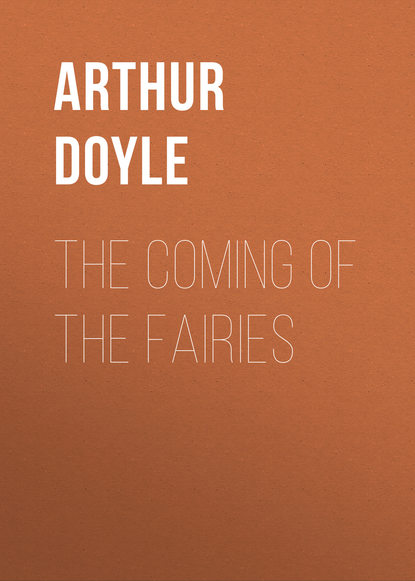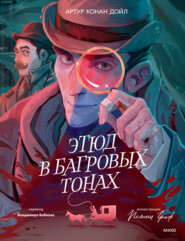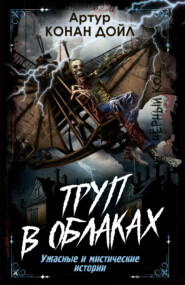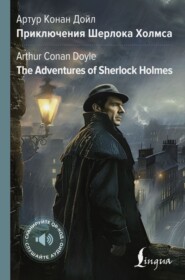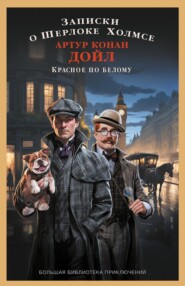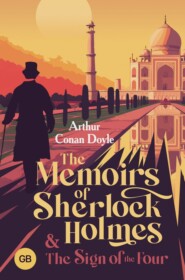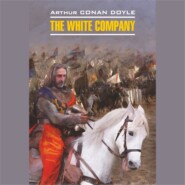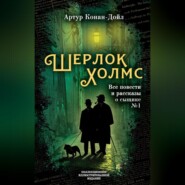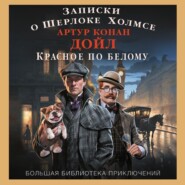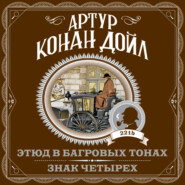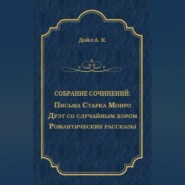По всем вопросам обращайтесь на: info@litportal.ru
(©) 2003-2025.
✖
The Coming of the Fairies
Настройки чтения
Размер шрифта
Высота строк
Поля
These psychic impressions and messages are often as from one who sees in a glass darkly and contain a curious mixture of truth and error. Upon my submitting this message to Mr. Gardner he was able to assure me that the description was, on the whole, a very accurate one of Mr. Snelling and his surroundings, the gentleman who had actually handled the negatives, subjected them to various tests and made enlarged positives. It was, therefore, this intermediate incident, and not the original inception of the affair, which had impressed itself upon Mr. Lancaster's guide. All this is, of course, quite non-evidential to the ordinary reader, but I am laying all the documents upon the table.
Mr. Lancaster's opinion had so much weight with us, and we were so impressed by the necessity of sparing no possible pains to get at truth, that we submitted the plates to fresh examination, as detailed in the following letter:
5 Craven Road, Harlesden, N.W.10, July 12, 1920.
Dear Sir Arthur,
Just a line to report progress and acknowledge your kind letters and enclosure from Kodak's.
A week back, after your reference to Mr. Lancaster's opinion, I thought I would get a more careful examination of the negatives made than before, though that was searching enough. So I went over to Mr. Snelling's at Harrow and had a long interview with him, again impressing him with the importance of being utterly certain. I told you, I think, that this Mr. Snelling has had a varied and expert connection of over thirty years with the Autotype Company and Illingworth's large photographic factory and has himself turned out some beautiful work in natural and artificial studio studies. He recently started for himself at Wealdstone (Harrow) and is doing well.
Mr. Snelling's report on the two negatives is positive and most decisive. He says he is perfectly certain of two things connected with these photos, namely:
1. One exposure only;
2. All the figures of the fairies moved during exposure, which was "instantaneous."
As I put all sorts of pressing questions to him, relating to paper or cardboard figures, and backgrounds and paintings, and all the artifices of the modern studio, he proceeded to demonstrate by showing me other negatives and prints that certainly supported his view. He added that anyone of considerable experience could detect the dark background and double exposure in the negative at once. Movement was as easy, as he pointed out in a crowd of aeroplane photos he had by him. I do not pretend to follow all his points, but I am bound to say he thoroughly convinced me of the above two, which seem to me to dispose of all the objections hitherto advanced when they are taken together! Mr. S. is willing to make any declaration embodying the above and stakes his reputation unhesitatingly on their truth.
I am away from London from Wednesday next till the 28th when I go on to Bingley for one or two days' investigation on the spot. I propose that you have the two negatives, which are carefully packed and can be posted safely, for this fortnight or so. If you would rather not handle them I will send them to Mr. West of Kodak's, or have them taken to him for his opinion, for I think, as you say, it would be worth having, if he has had direct and extensive practical experience.
I am very anxious now to see this right through, as, though I felt pretty sure before, I am more than ever satisfied now after that interview the other day.
Yours sincerely,
Edw. L. Gardner.
After receiving this message and getting possession of the negatives I took them myself to the Kodak Company's Offices in Kingsway, where I saw Mr. West and another expert of the Company. They examined the plates carefully, and neither of them could find any evidence of superposition, or other trick. On the other hand, they were of opinion that if they set to work with all their knowledge and resources they could produce such pictures by natural means, and therefore they would not undertake to say that these were preternatural. This, of course, was quite reasonable if the pictures are judged only as technical productions, but it rather savours of the old discredited anti-spiritualistic argument that because a trained conjurer can produce certain effects under his own conditions, therefore some woman or child who gets similar effects must get them by conjuring. It was clear that at the last it was the character and surroundings of the children upon which the inquiry must turn, rather than upon the photos themselves. I had already endeavoured to open up human relations with the elder girl by sending her a book, and I had received the following little note in reply from her father:
31 Main Street, Cottingley, Bingley, July 12, 1920.
Dear Sir,
I hope you will forgive us for not answering your letter sooner and thanking you for the beautiful book you so kindly sent to Elsie. She is delighted with it. I can assure you we do appreciate the honour you have done her. The book came last Saturday morning an hour after we had left for the seaside for our holidays, so we did not receive it until last night. We received a letter from Mr. Gardner at the same time, and he proposes coming to see us at the end of July. Would it be too long to wait until then, when we could explain what we know about it?
Yours very gratefully,
Arthur Wright.
It was evident, however, that we must get into more personal touch, and with this object Mr. Gardner went North and interviewed the whole family, making a thorough investigation of the circumstances at the spot. The result of his journey is given in the article which I published in the Strand Magazine, which covers all the ground. I will only add the letter he wrote to me after his return from Yorkshire.
5 Craven Road, Harlesden, N.W.10, July 31, 1920.
My dear Conan Doyle,
Yours just to hand, and as I have now had an hour to sort things out I write at once so that you have the enclosed before you at the earliest moment. You must be very pressed, so I put the statement as simply as possible, leaving you to use just what you think fit. Prepared negatives, prints of quarter, half-plate, and enlarged sizes, and lantern slides, I have all here.
Also on Tuesday I shall have my own photographs of the valley scenery including the two spots shown in the fairy prints, and also prints of the two children taken in 1917 with their shoes and stockings off, just as they played in the beck at the rear of their house. I also have a print of Elsie showing her hand.
With regard to the points you raise:
1. I have definite leave and permission to act as regards the use made of these photographs in any way I think best.
Publication may be made of them, the only reserve being that full names and addresses shall be withheld.
2. Copies are ready here for England and U.S.A.
3. … The Kodak people and also the Illingworth Co. are unwilling to testify. The former, of course, you know of. Illingworths claim that they could produce, by means of clever studio painting and modelling, a similar negative. Another Company's expert made assertions concerning the construction of the "model" that I found were entirely erroneous directly I saw the real ground! They, however, barred any publication. The net result, besides Snelling's views, is that the photograph could be produced by studio work, but there is no evidence positively of such work in the negatives. (I might add that Snelling, whom I saw again yesterday evening, scouts the claim that such negatives could be produced. He states that he would pick such a one out without hesitation!)
4. My report is enclosed and you are at perfect liberty to use this just as you please.
The father, Mr. Arthur Wright, impressed me favourably. He was perfectly open and free about the whole matter. He explained his position – he simply did not understand the business, but is quite clear and positive that the plate he took out of the Midg camera was the one he put in the same day. His work is that of electrician to an estate in the neighbourhood near. He is clear-headed and very intelligent, and gives one the impression of being open and honest. I learnt the reason of the family's cordial treatment of myself. Mrs. Wright, a few years back, came into touch with theosophical teachings and speaks of these as having done her good. My own connection with the Theosophical Society she knew of and this gave them confidence. Hence the very cordial reception I have met with, which somewhat had puzzled me.
By the way, I think "L.'s" guide ran up against innocent little Snelling! He matches the description quite well, as I realized last night. And he did prepare the new negatives from which the prints you have were made, and he has a room full up with weird machines with handles and devices used in photography…
Sincerely yours,
Edw. L. Gardner.
I trust that the reader will agree that up to this point we had not proceeded with any undue rashness or credulity, and that we had taken all common-sense steps to test the case, and had no alternative, if we were unprejudiced seekers for truth, but to go ahead with it, and place our results before the public, so that others might discover the fallacy which we had failed to find. I must apologize if some of the ground in the Strand article which follows has already been covered in this introductory chapter.
CHAPTER II
THE FIRST PUBLISHED ACCOUNT – "STRAND" CHRISTMAS NUMBER, 1920
Should the incidents here narrated, and the photographs attached, hold their own against the criticism which they will excite, it is no exaggeration to say that they will mark an epoch in human thought. I put them and all the evidence before the public for examination and judgment. If I am myself asked whether I consider the case to be absolutely and finally proved, I should answer that in order to remove the last faint shadow of doubt I should wish to see the result repeated before a disinterested witness. At the same time, I recognize the difficulty of such a request, since rare results must be obtained when and how they can. But short of final and absolute proof, I consider, after carefully going into every possible source of error, that a strong prima facie case has been built up. The cry of "fake" is sure to be raised, and will make some impression upon those who have not had the opportunity of knowing the people concerned, or the place. On the photographic side every objection has been considered and adequately met. The pictures stand or fall together. Both are false, or both are true. All the circumstances point to the latter alternative, and yet in a matter involving so tremendous a new departure one needs overpowering evidence before one can say that there is no conceivable loophole for error.
It was about the month of May in this year that I received the information from Miss Felicia Scatcherd, so well-known in several departments of human thought, to the effect that two photographs of fairies had been taken in the North of England under circumstances which seemed to put fraud out of the question. The statement would have appealed to me at any time, but I happened at the moment to be collecting material for an article on fairies, now completed, and I had accumulated a surprising number of cases of people who claimed to be able to see these little creatures. The evidence was so complete and detailed, with such good names attached to it, that it was difficult to believe that it was false; but, being by nature of a somewhat sceptical turn, I felt that something closer was needed before I could feel personal conviction and assure myself that these were not thought-forms conjured up by the imagination or expectation of the seers. The rumour of the photographs interested me deeply, therefore, and following the matter up from one lady informant to another, I came at last upon Mr. Edward L. Gardner, who has been ever since my most efficient collaborator, to whom all credit is due. Mr. Gardner, it may be remarked, is a member of the Executive Committee of the Theosophical Society, and a well-known lecturer upon occult subjects.
He had not himself at that time mastered the whole case, but all he had he placed freely at my disposal. I had already seen prints of the photographs, but I was relieved to find that he had the actual negatives, and that it was from them, and not from the prints, that two expert photographers, especially Mr. Snelling of 26 The Bridge, Wealdstone, Harrow, had already formed their conclusions in favour of the genuineness of the pictures. Mr. Gardner tells his own story presently, so I will simply say that at that period he had got into direct and friendly touch with the Carpenter family. We are compelled to use a pseudonym and to withhold the exact address, for it is clear that their lives would be much interrupted by correspondence and callers if their identity were too clearly indicated. At the same time there would be, no doubt, no objection to any small committee of inquiry verifying the facts for themselves if this anonymity were respected. For the present, however, we shall simply call them the Carpenter family in the village of Dalesby, West Riding.
Some three years before, according to our information, the daughter and the niece of Mr. Carpenter, the former being sixteen and the other ten years of age, had taken the two photographs – the one in summer, the other in early autumn. The father was quite agnostic in the matter, but as his daughter claimed that she and her cousin when they were together continually saw fairies in the wood and had come to be on familiar and friendly terms with them, he entrusted her with one plate in his camera. The result was the picture of the dancing elves, which considerably amazed the father when he developed the film that evening. The little girl looking across at her playmate, to intimate that the time had come to press the button, is Alice, the niece, while the older girl, who was taken some months later with the quaint gnome, is Iris, the daughter. The story ran that the girls were so excited in the evening that one pressed her way into the small dark-room in which the father was about to develop, and that as she saw the forms of the fairies showing through the solution she cried out to the other girl, who was palpitating outside the door: "Oh, Alice, Alice, the fairies are on the plate – they are on the plate!" It was indeed a triumph for the children, who had been smiled at, as so many children are smiled at by an incredulous world for stating what their own senses have actually recorded.
The father holds a position of trust in connection with some local factory, and the family are well-known and respected. That they are cultivated is shown by the fact that Mr. Gardner's advances towards them were made more easy because Mrs. Carpenter was a reader of theosophical teachings and had gained spiritual good from them. A correspondence had arisen and all their letters were frank and honest, professing some amazement at the stir which the affair seemed likely to produce.
Thus the matter stood after my meeting with Mr. Gardner, but it was clear that this was not enough. We must get closer to the facts. The negatives were taken round to Kodak, Ltd., where two experts were unable to find any flaw, but refused to testify to the genuineness of them, in view of some possible trap. An amateur photographer of experience refused to accept them on the ground of the elaborate and Parisian coiffure of the little ladies. Another photographic company, which it would be cruel to name, declared that the background consisted of theatrical properties, and that therefore the picture was a worthless fake. I leaned heavily upon Mr. Snelling's whole-hearted endorsement, quoted later in this article, and also consoled myself by the broad view that if the local conditions were as reported, which we proposed to test, then it was surely impossible that a little village with an amateur photographer could have the plant and the skill to turn out a fake which could not be detected by the best experts in London.
The matter being in this state, Mr. Gardner volunteered to go up at once and report – an expedition which I should have wished to share had it not been for the pressure of work before my approaching departure for Australia. Mr. Gardner's report is here appended:
5 Craven Road, Harlesden, N.W.10, July 29, 1920.
It was early in this year, 1920, that I heard from a friend of photographs of fairies having been successfully taken in the North of England. I made some inquiries, and these led to prints being sent to me with the names and address of the children who were said to have taken them. The correspondence that followed seemed so innocent and promising that I begged the loan of the actual negatives – and two quarter-plates came by post a few days after. One was a fairly clear one, the other much under-exposed.
The negatives proved to be truly astonishing photographs indeed, for there was no sign of double exposure nor anything other than ordinary straightforward work. I cycled over to Harrow to consult an expert photographer of thirty years' practical experience whom I knew I could trust for a sound opinion. Without any explanation I passed the plates over and asked what he thought of them. After examining the "fairies" negative carefully, exclamations began: "This is the most extraordinary thing I've ever seen!" "Single exposure!" "Figures have moved!" "Why, it's a genuine photograph! Wherever did it come from?"
I need hardly add that enlargements were made and subjected to searching examination – without any modification of opinion. The immediate upshot was that a "positive" was taken from each negative, that the originals might be preserved carefully untouched, and then new negatives were prepared and intensified to serve as better printing mediums. The originals are just as received and in my keeping now. Some good prints and lantern slides were soon prepared.
In May I used the slides, with others, to illustrate a lecture given in the Mortimer Hall, London, and this aroused considerable interest, largely because of these pictures and their story. A week or so later I received a letter from Sir A. Conan Doyle asking for information concerning them, some report, I understood, having reached him from a mutual friend. A meeting with Sir Arthur followed, and the outcome was that I agreed to hasten my proposed personal investigation into the origin of the photographs, and carry this through at once instead of waiting till September, when I should be in the North on other matters.
In consequence, to-day, July 29, I am just back in London from one of the most interesting and surprising excursions that it has ever been my fortune to make!





